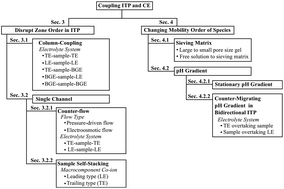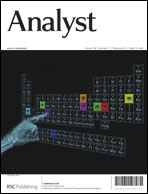Coupling isotachophoresis and capillary electrophoresis: a review and comparison of methods
Abstract
We present a comprehensive review and comparison of the methodologies for increasing sensitivity and resolution of capillary electrophoresis (CE) using online transient isotachophoresis (tITP). We categorize the diverse set of coupled tITP and CE (tITP-CE) methods based on their fundamental principles for disrupting isotachophoretic preconcentration and triggering electrophoretic separation. Based on this classification, we discuss important features, advantages, limitations, and optimization principles of various tITP-CE methods. We substantiate our discussion with original simulations, instructive examples, and published experimental results.


 Please wait while we load your content...
Please wait while we load your content...